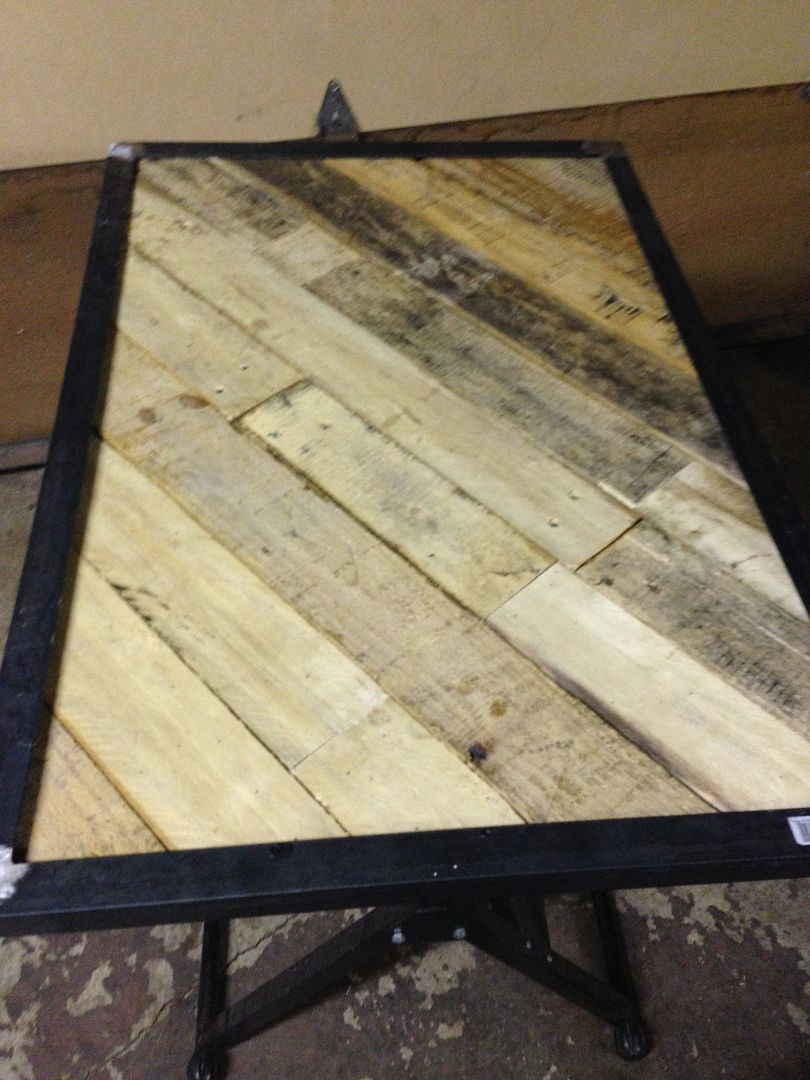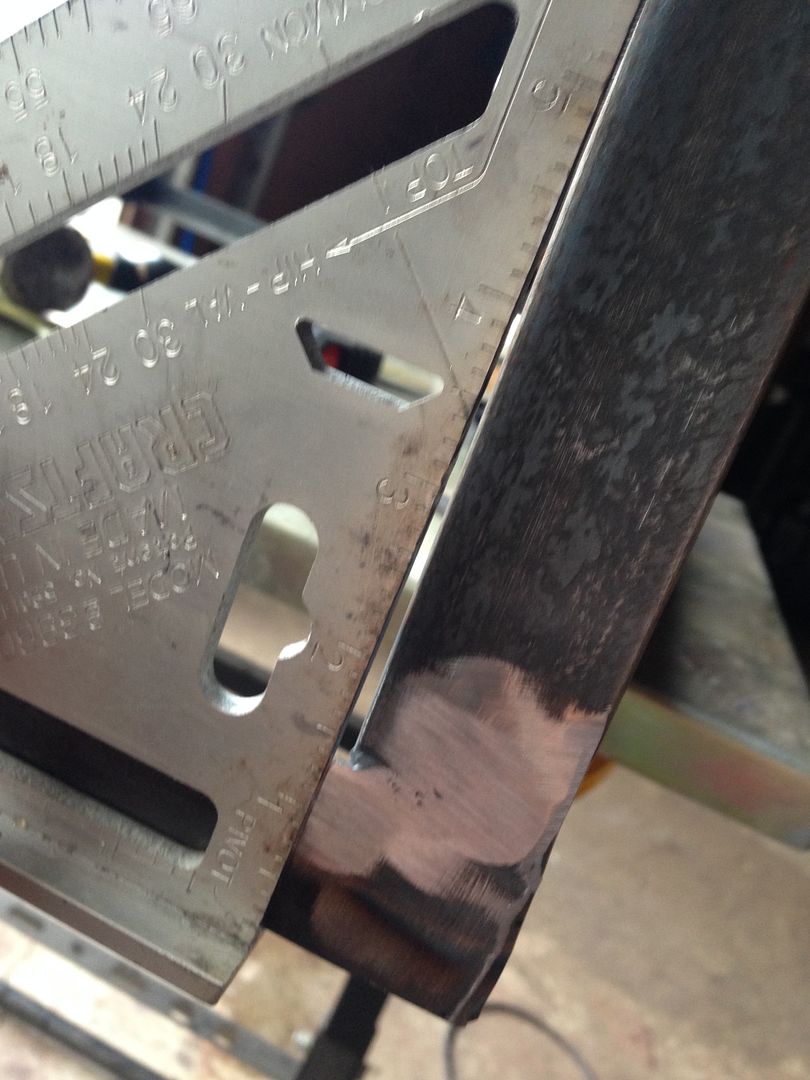Thanks guys. I'll see what I can do. I don't want to do square for the legs
At least not on this project.
So I'm about 1 hour into cutting the frame, welding and grinding. Still have to go back and do touch ups. It looks square, but it's about 3/32 off. So I guess not too bad since I don't have a jig or fixture or clamps.
The bottom board is only 1/8" short, but it's what I got from the scrap pile at work so it will do. I lined up all the widths of wood and marked them and started to rip pallets apart. Those boards crack EASILY. So some glue and brads. (most of them popped through the back that I didn't realize until the end so I cut and sanded them)
Cutting the pallet boards and all that took a lot longer than expected. Probably spent an easy 2 hours on it.
Did some very light sanding and this is what she looks like now. I honestly thought it looked like crap until I cut it square and put the metal frame around it. Now I don't want it to be a coffee table. I kind of want to just hang it on the wall. I think it looks cool, but I don't think the MRS would have that. So I'll finish it as a coffee table. I did take a flap disc to the frame of it so it's shiny but didn't take a pic.
So as she sits now

Going to bring it to my dads house where he has all the wood working tools and see if I can router a 1/16th or 1/8" edge so it sits flush with the angle iron. Then to buy some more angle and weld the legs on, but I'm going to weld them to the base of the frame and grind it so it looks like one solid piece. Hope this turns out well!
What should I finish the wood with? I know nothing about stains and polys.







